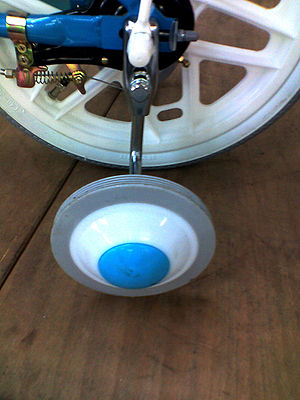Overland Park, Kan.July 18, 2009 – The National Auctioneers Association (NAA) inducted three new members into its Hall of Fame: Marvin E. Alexander, CAI, of Martin, Tenn.; Larry Latham, CAI, of Las Vegas, Nev.; and Stephen D. Lewis of Morehead, Ky. The three inductees were honored at the 60th annual International Auctioneers Conference and Show in Overland Park, Kan. during the President’s Gala.
Marvin E. Alexander, CAI – Martin, Tennessee
Marvin E. Alexander became a professional auctioneer in 1963 when he founded his business, Alexander Auctions & Real Estate Sales in Martin, Tenn. In those days, Martin said he carried around a set of speakers, a calculator, and pads of clerking sheets when he bid-called. Now, the daily operations in the profession have changed drastically, as they rely more heavily on technological agents, but Marvin learned the work necessary to excel at the craft. Today, Marvin commands a mobile office, equipped with office machinery, sound equipment, and wireless clerking and cashiering systems for auction day.
Marvin specializes is in real estate, including industrial and commercial property, farm and development land, acreage tracts, and residential properties. In additional to being an NAA member and past board of director, Marvin is a member of the Tennessee Auctioneers Association, which he served a term as president, and Tennessee and National Realtors Associations. In 1989, Marvin won the International Auctioneer Championship (IAC) competition, and the All-Around World Champion Auctioneer competition in 1997.
Marvin is heavily involved in several community organizations, including the Goodwill Shrine Club, the University of Tennessee Rodeo Booster Club, and various high school, 4-H, and booster clubs.
Larry Latham, CAI – Las Vegas, Nevada
Larry Latham has dedicated his life to the sale of real estate, either by auction or private treaty. Larry began his career as a real estate auctioneer in the early 1980s. In 1984, he graduated from the Certified Auctioneers Institute (CAI) at Indiana University in order to expand his auctioneering prowess. Soon after, he was elected the first treasurer of CAI. In addition to being a leader within the association, Larry was a leader and a voice for the profession in Washington lobbying on behalf of the profession in Congress.
Prior to Larry entering the industry, real estate auctions were generally conducted on-site, which only allowed for one unit to be sold at a time. Realizing that selling real estate piecemeal was inefficient, Larry began gathering large amounts of auction-goers into hotel ballrooms and conducting large scale auctions. He marketed the properties and displayed photographs of the real estate and was able to successfully sell hundreds of properties at a single auction. During the Savings and Loan crises in the late 1980s and early 1990s, Larry was instrumental in selling large amounts of real estate for the Resolution Trust Corporation (RTC) and Federal Deposit Insurance Corporation (FDIC).
By the mid-1990s, Larry sold his real estate auction business to Chase Bank and began work as a full-time real estate developer. Larry recently re-entered the auctioneering world in 2008 and created AmeriBid, a real estate auction company whose success includes the disposition of over 150,000 properties.
Larry has four daughters and one grandson.
Stephen Lewis – Morehead, Kentucky
Stephen Lewis was raised in the fast-paced world of auctioneering. His late father, NAA Hall of Famer C. Roger Lewis, established the successful auction company C. Roger Lewis Agency in 1958 in Morehead, Kentucky. After graduating with a Bachelor of Arts Degree from Anderson University in Anderson, Indiana in 1972, Stephen returned to Morehead to join the family business. The firm specializes in real estate auctions, as well as commercial and estate liquidations.
Stephen has served a term as a president for the Kentucky Auctioneers Association. Since 1985, he has served on the Kentucky Board of Auctioneers Licensing Board. A member of the NAA since 1973, Stephen has served the association as a treasurer and director. Currently, Stephen is a member of five professional organizations and sits on the Board of Trustees for three philanthropic organizations.
Stephen and his wife, Jan, have two daughters and three grandchildren.




